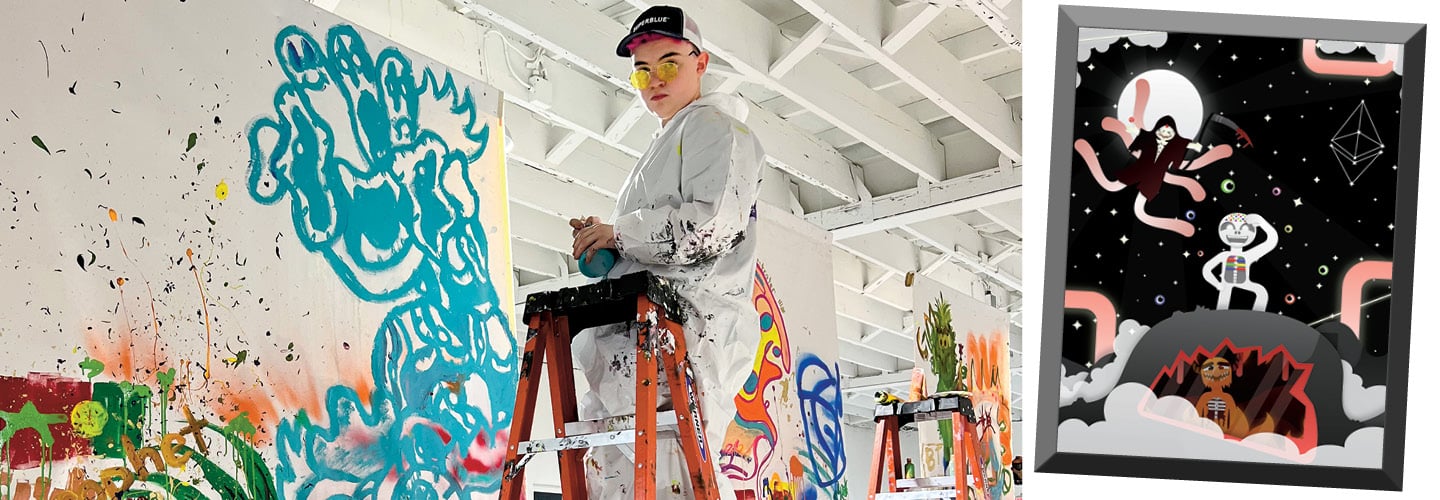Jaiden Stipp couldn’t believe his eyes. It was February 2021, and the then 15-year-old from Tacoma, Washington, was selling his first piece of digital artwork as an NFT, or non-fungible token. Well past midnight, he remained fixated on his computer screen, watching in awe as the bids climbed higher and higher.
When Jaiden woke up in the morning, bids were still pouring in. The final selling price for his cartoonish graphic of an astronaut-skeleton waving at the moon was 20ETH*—an amount in cryptocurrency worth about $30,000 at the time.
“I was like freaking out and jumping around the house,” he says. “After I saw some of the huge sales going on, I was like whoa . . . these might have the potential to go pretty big.”
An NFT is a digital file that’s usually bought using cryptocurrency and is built on a blockchain (see “Terms to Know”), a decentralized digital database that supports cryptocurrencies such as Bitcoin and Ether. With blockchain technology, NFTs transform anything digital into one-of-a-kind assets that can be bought or sold. While anyone can look at or download an NFT image, only one person owns the original—and the NFT itself gives ownership of the work. Think about it like this: You could buy a picture or a print of the Mona Lisa, but there’s only one original painting.
Jaiden Stipp couldn’t believe his eyes. It was February 2021. The then-15-year-old from Tacoma, Washington, was selling his first piece of digital artwork. It was formatted as an NFT, or non-fungible token. Well past midnight, he focused on his computer screen. He watched in awe as the bids climbed higher and higher.
When Jaiden woke up in the morning, bids were still pouring in. The piece was a cartoonish graphic of an astronaut-skeleton waving at the moon. The final selling price was 20ETH.* That was worth about $30,000 in cryptocurrency at the time.
“I was like freaking out and jumping around the house,” he says. “After I saw some of the huge sales going on, I was like whoa . . . these might have the potential to go pretty big.”
An NFT is a digital file that’s usually bought using cryptocurrency. It’s built on a blockchain (see “Terms to Know”), an open digital database that supports cryptocurrencies such as Bitcoin and Ether. With blockchain technology, NFTs transform anything digital into one-of-a-kind assets that can be bought or sold. Anyone can look at or download an NFT image, but only one person owns the original. In fact, the NFT itself gives ownership of the work. Think about it like this: You could buy a picture or a print of the Mona Lisa, but there’s only one original painting.

